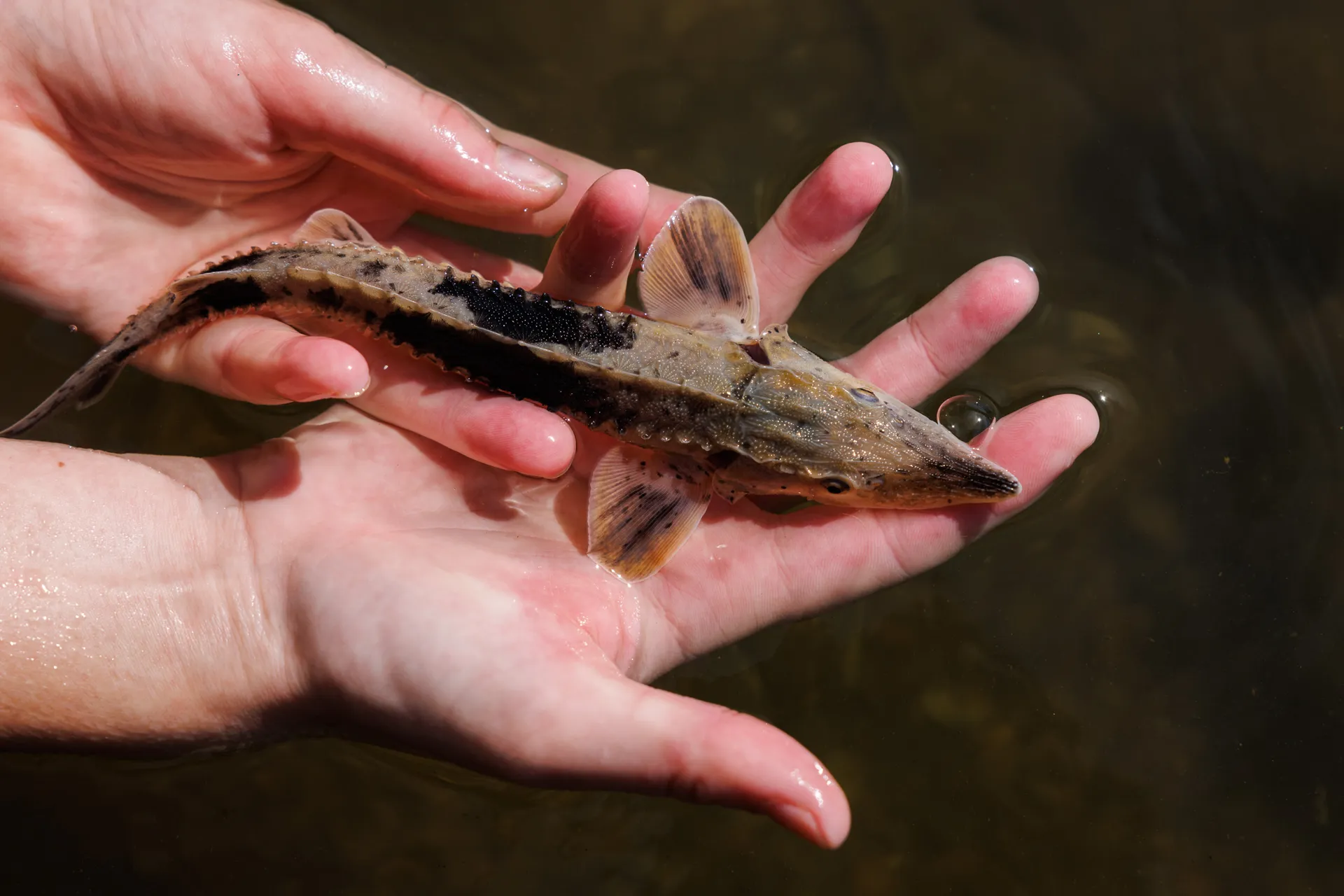Chattanooga, Tenn. (Oct. 7, 2022) – For a fish that can live more than 150 years and take more than three decades to reach reproductive maturity, patience among Lake Sturgeon isn’t so much a virtue as a necessity.
The same can be said for members of the Lake Sturgeon Working Group, a cadre of conservation scientists and government agencies which has spent 22 years attempting to restore this long-absent river giant to the Tennessee and Cumberland rivers.
Despite raising and releasing more than 330,000 sturgeon since 2000, only the first wave of individuals reintroduced by the working group have reached an age when they could begin reproducing on their own.
Knowing what a late-bloomer species the Lake Sturgeon is, scientists understood going into the restoration effort that being successful would require taking a long view and a good deal of endurance, says Dr. Anna George, vice president of conservation science and education at the Tennessee Aquarium, one of the Lake Sturgeon Working Group’s founding members.
“Because of Lake Sturgeons’ life history, we knew this would be a long-term project,” George says. “It wasn’t ever realistic to think we could release sturgeon for a couple of years and see the population recover. But all of the partners knew that, if we committed to this project for a long time, we could be part of restoring this really incredible species back to Tennessee.”
Part of the effort to bring about the Lake Sturgeon’s return involves forging a connection between the community and these armor-clad fish, which had disappeared from the river by the 1970s due to damming, overfishing and poor water quality. To that end, many fish releases by the Aquarium and other working group members are open to the public.
During releases, participants of all ages can lay fingers on these dinosaur-like fish and have a hand in their reintroduction. Today marked the reintroduction of the most recent class of juvenile sturgeon near downtown Chattanooga.
Gathering on the shores of the Tennessee River next to Coolidge Park, 30 students from Ivy Academy gently slipped finger-length Lake Sturgeon in dip nets, one by one, into the river. For these 9-12 graders, taking part in the release offered a chance to see conservation science in action, which dovetails perfectly with the school’s emphasis on environmental stewardship, says Ivy Academy Biology and Environmental Science Instructor Catherine Voegel.
“By learning more about stewardship organizations and projects in our area, the students can better explore their interests and increase their activism in conservation,” Voegel says. “They become more excited when there is a real-world connection and they can see a relevant outcome of a project in person.”
And in a sense, George says, working alongside the visitors from Ivy Academy served to further highlight and emphasize the amount of time that has already been devoted to the restoration program.
“These are high school students, who haven’t been alive as long as we’ve been releasing sturgeon,” she says. “That really puts the scope of this effort into perspective.”
As of 2021, almost a third of a million sturgeon (332,500) raised by the Tennessee Aquarium, U.S. Fish and Wildlife Service and Tennessee Wildlife Resources Agency have been reintroduced to the Tennessee and Cumberland rivers.
Thanks to the timespan of the restoration effort and the voracious appetite of these baby fish — the offspring of wild adults spawning in Wisconsin’s Wolf River — the expenses necessary to bring the Lake Sturgeon back to its native range have been immense.
The cost to feed and care for the various species raised at the Tennessee Aquarium Conservation Institute’s headquarters on the campus of Baylor School run in excess of $16,000 annually. About three-quarters of this amount is spent on the juvenile Lake Sturgeon.
While growing large and robust enough to survive in the river, the juvenile sturgeon dine thrice daily on increasingly large quantities of frozen bloodworms and specialized food pellets. Prior to today’s release, the latest class of Lake Sturgeon were eating more than 200 pounds of bloodworms a week (about 30 pounds a day).
“There is no short-term or quick fix in conservation,” George says. “But what’s really amazing about nature is that if we all work together and commit to a project for the long term, we can make a difference and reverse environmental problems.
“It may take a while to see the result of our actions, but we know we’ll be even more proud of the difference we made because of that long-term commitment and our patience to seeing it through.”
To learn more about joining companies and individuals who support these vital programs of the Tennessee Aquarium and the Tennessee Conservation Institute, visit tnaqua.org/donate.
